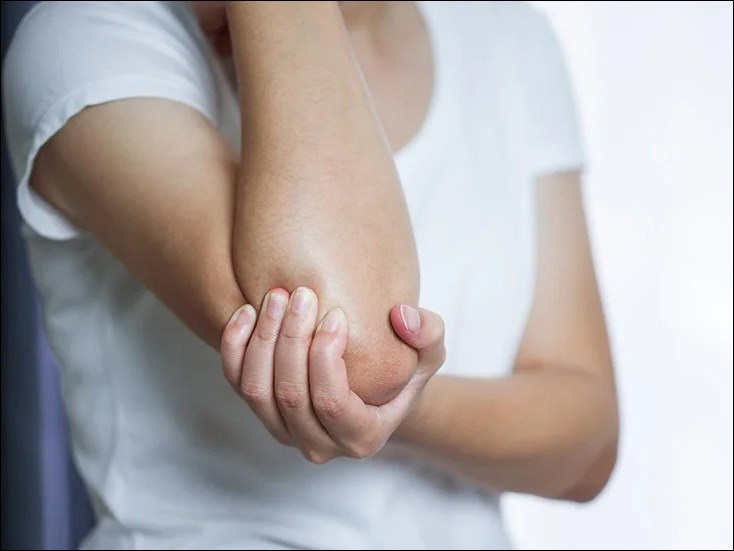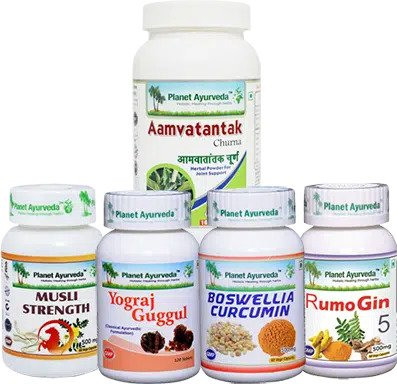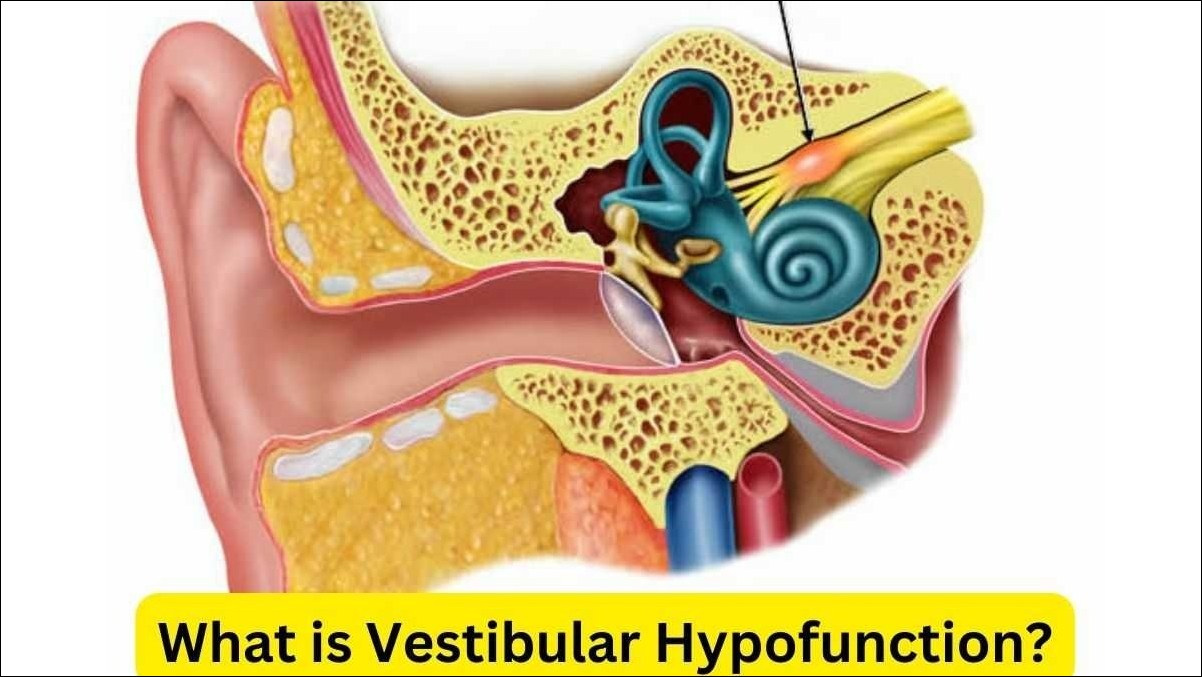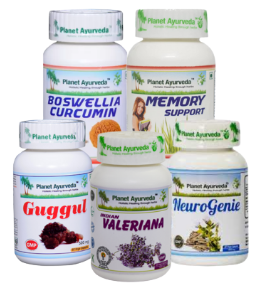What Are Myositis, Causes & Symptoms, Treatment with Ayurveda?
ABSTRACT
The health of a person depends on all the bodily components and their respective well-being. Muscles and bones are the main structures responsible for various kinds of movements in the body. There can be a variety of causes that may deplete the status of the musculoskeletal system and thus interfere with the day to day activities. One such condition in headlines these days is Myositis. A popular actress Samantha is diagnosed with myositis. Let us learn about this condition in detail.

INTRODUCTION
The term myositis is a general term used for the chronic and progressive inflammation of the muscles of the body. Some types of this condition are also associated with skin rashes. Myositis can affect people of any age group. Females are more prone as compared to males. There are different types of myositis such as dermatomyositis, inclusion body myositis, juvenile myositis, polymyositis, etc. The causes of this condition will be described as follows.
CAUSES
The exact causes are yet not known. But the estimated causes underlying this condition can be autoimmune diseases such as lupus, rheumatoid arthritis, etc.; viral infections such as flu, cold, etc; drug toxicity, etc. However some reports and research suggest the probability of an autoimmune state to arise from this condition.
SYMPTOMS
The symptoms vary vastly from person to person. The most common symptoms will include the following –
- Muscular pains
- Tenderness in muscles.
- General feeling of not being well.
- Excessive sweating during night time.
- Weight loss
- Weakness of muscles and tiredness
DIAGNOSIS
The diagnosis of myositis will include examination of symptoms along with the various investigations. The investigations will include electromyography, magnetic resonance therapy, nerve conduction study, antinuclear antibody test, genetic testing, etc. The treatment will be discussed as follows.
TREATMENT
There is no yet known specific treatment for myositis. However to manage the condition, corticosteroids such as prednisolone, etc. are prescribed. According to the patient’s condition, some immunosuppressant drugs may also be prescribed. In addition to the medicines, regular physical activity and exercises must be a part of the daily routine. While the modern allopathic medicines fail to effectively treat the condition, let us learn the ayurvedic approach for managing it.
AYURVEDIC ASPECT
Ayurveda is a well flourished science with plenty of beneficial medical facts. The principles of ayurveda explain various ways to get rid of the disease by establishing the equilibrium between the three dosha (vata, pitta, kapha). These three dosha are considered to be the fundamentals of a healthy body. And an imbalance between the levels of these dosha will result in the diseased state.
The condition of myositis can also be a result of the imbalance between the equilibrium of these dosha. In every disease, all the three dosha are vitiated but one or two of them are more prominently hindered, and constitute the major presenting features. In the case of myositis, the major dushti or vitiation is believed to be of the vata dosha. The patient experiences prickling pain which is similar to the characteristic Suchibhedan vata peeda (i.e. pain similar to that of being pricked by a needle) presented by the vitiation of vata dosha. So, the main line of ayurvedic management of the condition of Myositis will require balancing the levels of vata dosha. This can be accomplished by the administration of various ayurvedic formulations. The ayurvedic preparations will help to manage the diseased condition and enhance the health of the body. These ayurvedic products will be described as follows.
HERBAL REMEDIES BY PLANET AYURVEDA FOR MYOSITIS
Planet Ayurveda is providing various preparations of natural herbs which are prepared using authentic ways and provide great results in improving the condition of myositis. All the herbal products manufactured here are free from chemicals, preservatives, starch, additives, colors and fillers. These products are hundred percent natural and are formulated by MD Ayurvedic doctors with deep knowledge of Ayurveda and many years of experience. The ayurvedic formulations beneficial for the condition of myositis are described as follows.
PRODUCT LIST
- RUMOGIN 5 CAPSULES
- BOSWELLIA CURCUMIN
- MUSLI STRENGTH CAPSULES
- YOGRAJ GUGGUL
- AAMVATANTAK CHURNA
PRODUCT DERPTION
1. Rumogin 5 Capsules
Rumogin 5 capsules are prepared by planet ayurveda using various natural ingredients such as haridra (Curcuma longa), maricha (Piper nigrum), Pippali (Piper longum), etc. It helps to pacify the aggravated vata dosha from the body. This will help to improve the movement of the joints and the state of muscles, and will also be effective in managing pain impulses. Thus, benefiting the patient of myositis.
Dosage – One capsule two times a day, after meals.
2. Boswellia Curcumin
Boswellia curcumin is an ayurvedic formulation being prepared by planet ayurveda in the form of capsules. It contains a combination of beneficial ayurvedic herbs such as shallaki (Boswellia serrata) and haridra or turmeric (Curcuma longa). This combination helps to manage the pain sensations effectively. It is also known to provide strength to the muscles and bones in the body. Boswellia curcumin capsules will thus help to improve the movement and hence manage the condition of myositis.
Dosage – One capsule two times a day, after meals.
3. Musli Strength Capsules
Musli Strength Capsules are prepared by planet ayurveda containing natural extracts of safed musli (Asparagus adscendens) and gokshura (Tribulus terrestris). These capsules help to pacify the vitiated vata dosha from the body. Both herbs are very effective in strengthening the musculoskeletal system. It is also known to increase the overall health of the body. Thus, improving the condition of myositis.
Dosage – Musli Strength capsules can be given 1capsule two times a day, after meals.
4. Yograj Guggul
Yograj Guggul is a classical formulation mentioned in traditional Ayurveda texts consisting of Guggul resin (Commiphora mukul), Chitraka (Plumbago zeylanica), pippali (Piper longum) etc. This combination of herbs is very helpful in painful joints and muscles. This articulation helps to maintain the skeletal and neuromuscular system as well as removes toxins from the system. It helps to slow down the degenerative processes and boosts up the rejuvenating processes. Thus, benefitting the patient of myositis.
Dosage – 1 tablet two times a day with warm water, after meals.
5. Aamvatantak Churna
Aamvatantak churna is being prepared by Planet ayurveda. This churna contains powdered form of various medicinal herbs such as Ashwagandha (Withania somnifera), Methi (Fenugreek), Haridra (Curcuma longa), etc. The combinations of these drugs help to improve digestion and balance the vata dosha of the body. This will help to improve the pain sensations and also the general well-being of the patient suffering from myositis.
Dosage – Aamvatantak churna is to be taken 1/2 teaspoonful two times a day, after meals.
CONTACT PLANET AYURVEDA TO PROVIDE YOU THE COSTING / ORDERING AND DELIVERY INFORMATION AT – COSTING.PLANETAYURVEDA@GMAIL.COM OR CALL AT +91-172-5214040
CONCLUSION
After analyzing the above provided information regarding the myositis, it can be concluded that although, it is not a fatal condition but if not managed timely and properly, may hinder the quality of life adversely, upto a great extent. It requires appropriate medical attention and should be dealt with responsibly as it can hinder the life of the one suffering from it. Ayurveda provides principles for maintaining the healthy state of the body and managing the diseased condition effectively. The main aim of treatment of the myositis will be to pacify the vitiated vata dosha. This will be achieved with the use of ayurvedic formulation along with strictly following a healthy diet and lifestyle. So, ayurveda can effectively manage the cases of myositis and improve the health status of the patient up to a great extent.





